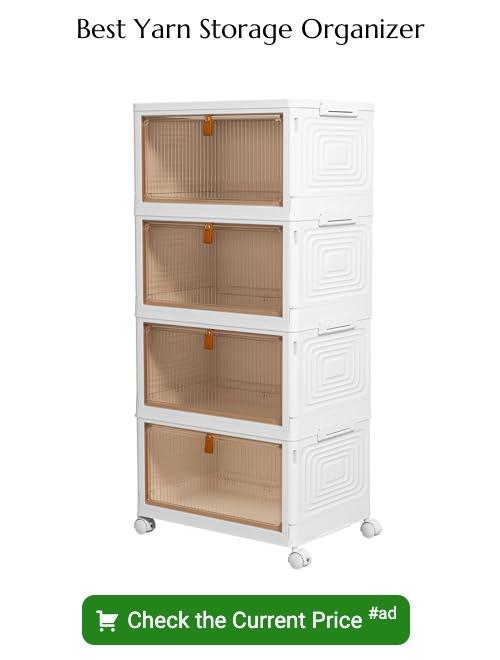Explore practical and creative ways to store your yarn that protect its quality while keeping it easily accessible for your knitting and crocheting projects.
Storing yarn properly is crucial to maintain its quality and longevity, and it’s easier than you might think. This article will guide you through the simple steps to store your yarn efficiently, whether you have a small stash or an entire room dedicated to your yarn crafts.
We’ll delve into the different methods of storage, tips on preventing damage from pests or humidity, and how to keep your yarn organized for easy access. By the end of this article, you’ll have all the information you need to store your yarn in a way that’s both functional and visually pleasing.
Key takeaways:
- Use airtight boxes for yarn storage (clear, stackable, silica gel packs)
- Prevent insect damage with clean yarn, repellents, and regular inspections
- Store yarn in dry, dark places to protect against sunlight and moisture
- Utilize vertical space with built-ins, pegboards, over-the-door storage, and wine racks
- Repurpose everyday items like baskets, jars, bins, and shoe organizers for yarn storage
Using Airtight Boxes for Yarn Storage

Opt for clear plastic boxes that allow for easy identification of colors and textures without removing them from their containers. Ensure the boxes used are airtight to create a barrier against pesky insects, dust, and moisture, which can harm your yarn over time.
Consider investing in boxes with stackable design features to make the most of your storage space. Using silica gel packs within the boxes can absorb any excess moisture, adding an extra layer of protection for your yarn.
Remember to loosely pack the yarn to prevent fiber distortion and allow for air circulation. Try to store yarn in their original skein or hank format, but if space is an issue, re-winding into a tidy cake or ball may make for more efficient storage.
In the event yarn is wound into cakes or balls, take note to slip the yarn label into the center to ensure you can always identify its type and washing instructions.
Finally, when storing, avoid placing the airtight boxes in areas of high heat or direct sunlight. Excessive heat can damage the fibers and sunlight can cause colors to fade. Store your boxes in a cool, dark place to keep yarn in optimal condition.
Preventing Insect Damage to Stored Yarn
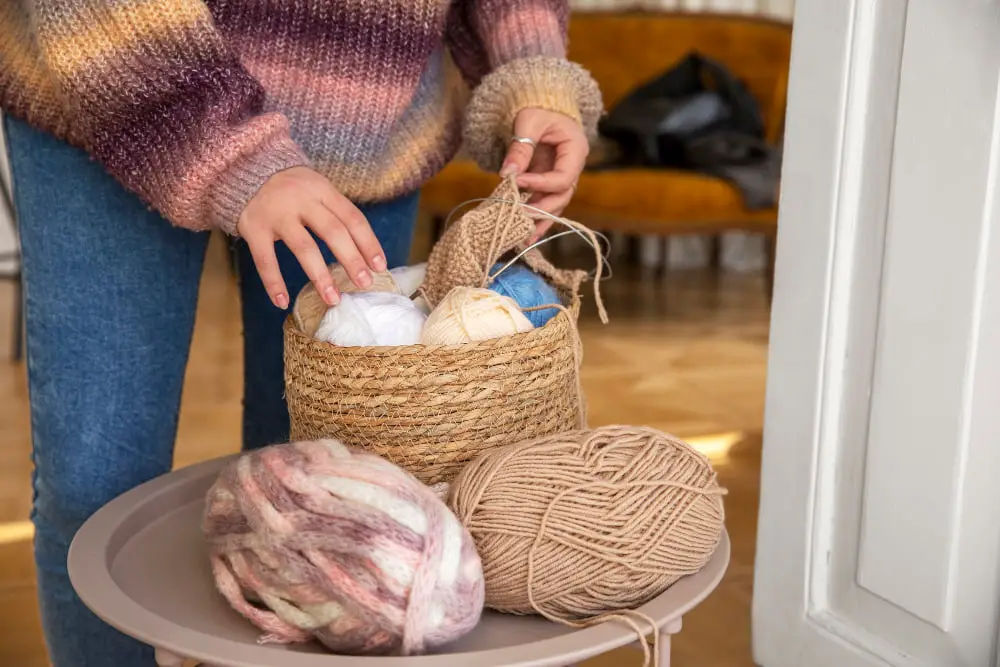
Insects are drawn to natural fiber yarns, creating potential risk of damage. To shield your yarn from these pests, incorporate certain practises into your storage routine.
First, always make sure the yarn is clean before storing. Insect larvae are particularly attracted to human sweat and food stains.
Next, consider the storage material. Plastic bins can provide a solid barrier against insects. However, make certain they seal tightly to avoid any unwanted entry.
Pack yarn with natural insect repellents, such as cedar blocks or lavender sachets. These not only deter pests, but also impart a pleasing aroma to your yarn.
Finally, vigilance is beneficial. Regularly inspect your stored yarn for any signs of insect damage, like gnawed yarn or larvae. This way, any infestation can be caught and addressed early before it spreads.
Importance of Dry, Dark Places for Yarn Storage

Storing yarn in dark, dry places provides several key benefits. Firstly, continuous exposure to sunlight can bleach yarn and fade its color. Dark storage spaces prevent this light damage. Secondly, dry environments inhibit mold growth, which can be detrimental to your yarn. Through absorption of ambient moisture, yarn can become damp and start to smell musty, not to mention the damage to the fibers.
Proper selection of storage areas involves avoiding damp spaces like basements, unless they are humidity controlled. Similarly, placing yarn on windowsills or areas with direct sunlight exposure should be ruled out. Consider dark shades or cabinets inside your house that do not get damp. Consider humidity controlled storage solutions if you live in a particularly damp climate.
Consider using silica gel packets in your yarn storage box as they can help to absorb any excess moisture. Also, ensure you are dry storing freshly washed yarn. It must be completely dried before tucking it away.
These steps together help prolong the life of your yarn, maintain its color vibrancy, and keep it ready for your next project.
Making Use of Vertical Space: Built-Ins for Yarn Storage
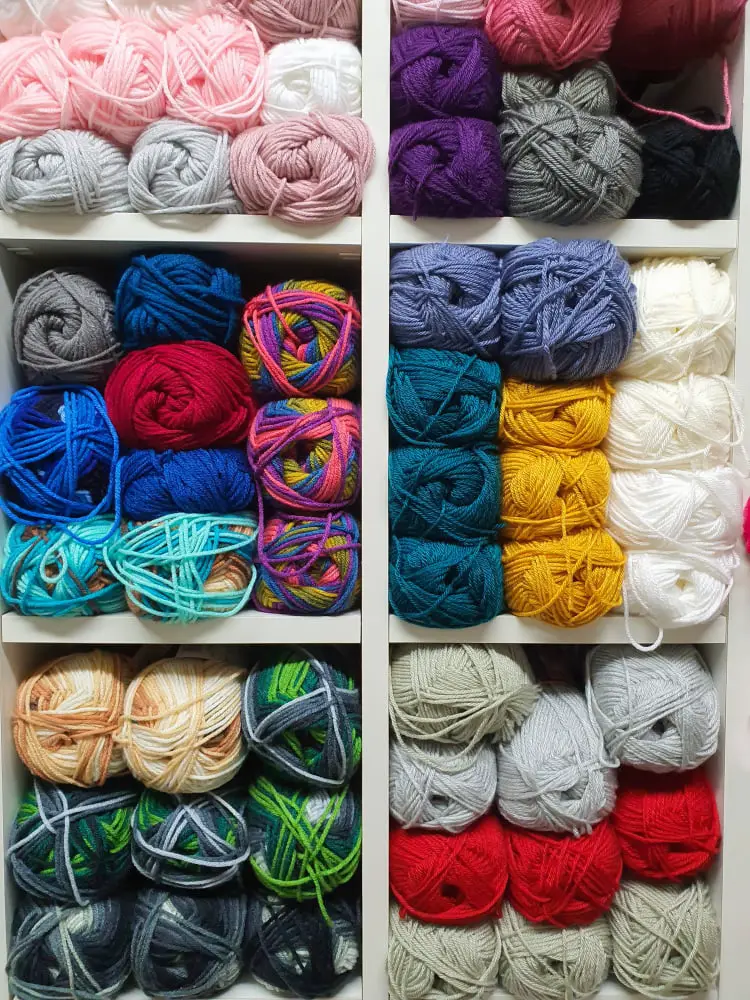
Making use of vertical space can transform the way you store your yarn collection, particularly when you incorporate built-ins.
Built-in shelves and cabinets are a great solution. Customize them based on the size and quantity of your yarn bundles. These spaces, when arranged smartly, help you spot the needed yarn instantly, saving time and hassle.
Pegboards are another excellent innovation in storage solutions. Attach them to the wall and use hooks to hang your yarn. One significant advantage is that you can constantly rearrange your yarn, suiting your changing needs.
Over-the-door hanging storage is another effective method. They offer plenty of compartments where you can easily tuck away smaller yarn skeins, leaving your shelves free for larger bundles.
Finally, consider using wall-mounted wine racks. They are perfect for storing yarn in a way that’s not only efficient but also adds a splash of color to your room.
Each of these measures maximizes space vertically, allowing for a tidy and organized yarn storage system.
Creative Ideas for Easy and Quick Access to Your Yarn
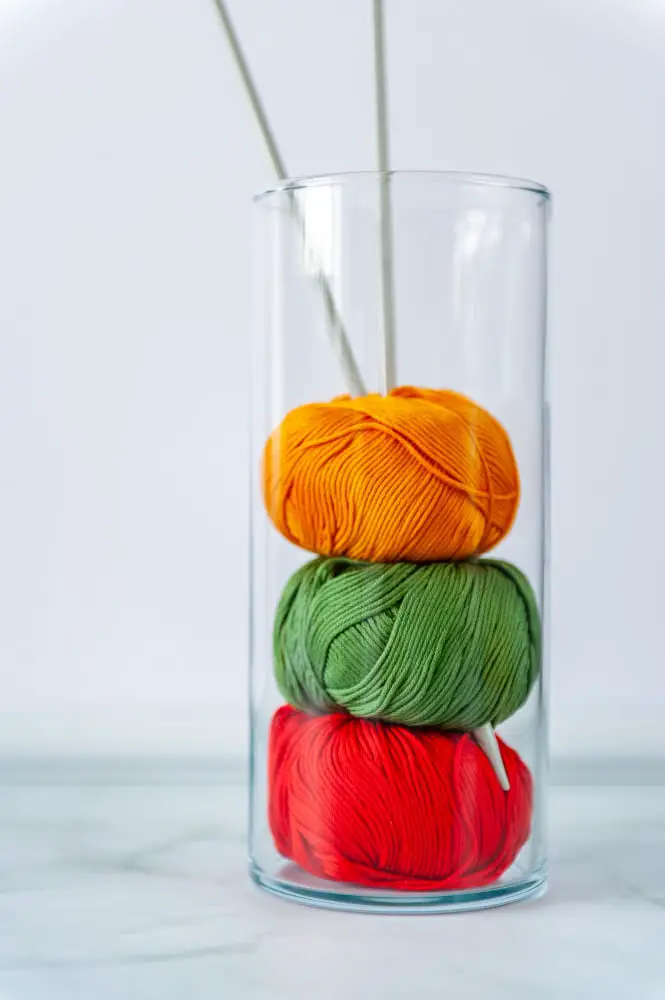
Wall-mounted Pegboards can be a great and unique way to display and store yarn, allowing for easy access. Clear shoe organizers hung over a door or mounted on a wall can also double as excellent yarn holders.
Shelves with cubby holes can keep your yarn organized, allowing you to sort by color or type. Wire baskets are not only stylish, but also convenient for yarn storage; you can see exactly what yarn you have and how much.
For bulky yarns, large glass jars or clear stackable bins can be perfect. Smaller jars can hold your smaller yarn balls. If you prefer to have your yarn tucked out of sight, consider utilizing drawer systems or carrying totes with compartments.
Remember, the goal is to make your yarn easy to access while also keeping it well maintained. Over time, you’ll likely develop your own system that perfectly suits your needs and space. Balance functionality and aesthetics to create a yarn storage system that fuels your passion for knitting or crocheting.
Best Practices for Cataloguing Your Yarn

An organized inventory of your yarn stash will save time and reduce stress while starting new projects. Here are some tips to catalog your yarn effectively:
Keep a digital record: Take advantage of the digital age and take pictures of each yarn type and shade you own. Upload these to a cloud storage service like Google Drive or Dropbox for easy access.
Create a yarn swatch: This can be a single crochet or knit square in each type of yarn. Attach a tag with all the important information: yarn type, color name, weight, and washing instructions.
Store yarn with its label: Always keep the label with the corresponding yarn. This provides vital information like fiber content, weight, washing instructions, and dye lot.
Use yarn management apps: There are various apps available that help manage your stash. These apps can store pictures, give you space to note down vital information, and some can even suggest patterns that can be made with the yarn in your stash.
Assign bins to specific yarn types: This can be done based on weight, fiber or color. This strategy of organization makes finding the perfect yarn for your next project quicker and easier.
Repurposing Everyday Items Into Yarn Storage Units
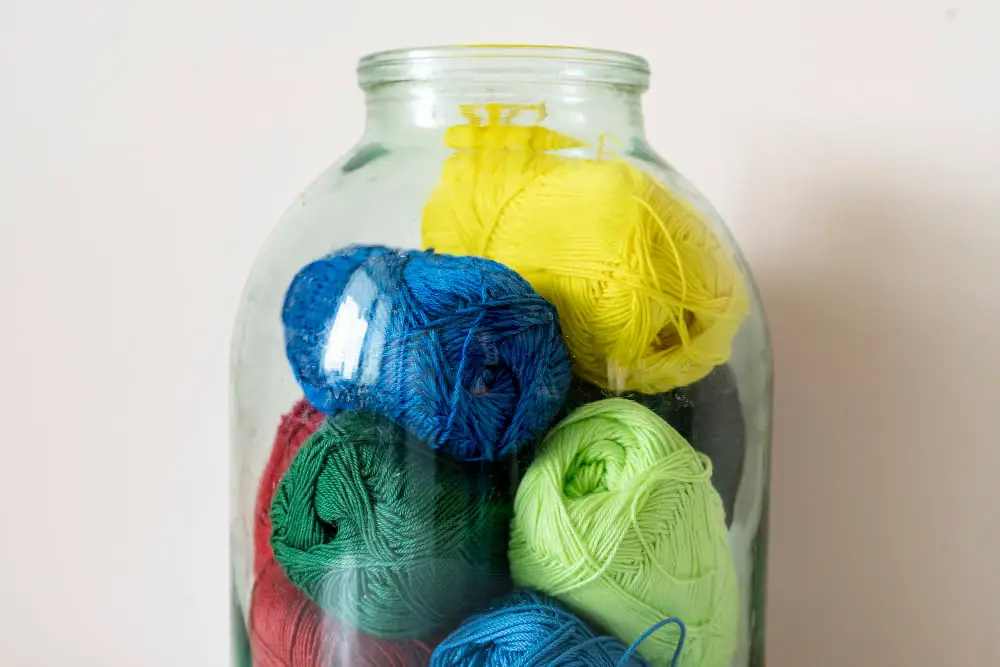
Identify items that can serve as yarn storage. Look for objects around your house that are not being used effectively, such as baskets, jars, bins, or shoe boxes.
Consider the size and shape of containers. Containers that are round or square, large or small, could all be suitable for storing yarn, based on your needs.
Shoe organizers are a handy option. Hang them on doors or walls and store balls of yarn in the pockets.
Wine racks, particularly the wooden ones, can be converted into yarn storage. Individual slots are perfect for skeins.
Utilize pegboards for organizing your yarn. You can hang baskets or small containers on them and color-coordinate your yarn.
Cardboard tubes, such as those from paper towel rolls or gift wraps, can be used to prevent yarn tangling. Simply thread the yarn through the tube, and it’s ready to use whenever needed.
Glass jars, particularly large ones, can provide an aesthetically pleasing way to store yarn. They also allow you to easily see what yarn you have on hand.
Remember that with all these options, it’s important to keep the yarn clean, out of direct sunlight, and away from pests.
FAQ
What is the best way to store yarn stash?
The optimal way to store a yarn stash is in labeled woven bins, non-clear containers, or a storage tower, ensuring it’s kept away from direct sunlight to avoid color fading and fiber weakening.
Can yarn be stored in a garage?
Yes, yarn can be stored in a garage, preferably in airtight storage to protect it from the elements.
Is it advisable to store yarn in plastic containers?
Storing yarn in plastic containers is advisable as it protects the material from dust, dampness, and pests, while keeping it in optimal condition for use.
How can one prevent yarn from becoming tangled while in storage?
To prevent yarn from becoming tangled while in storage, store each ball or skein separately in clear resealable bags or wrap them using yarn organizers, and keep them in a designated storage box or tote.
What are some innovative ways to display and store yarn in a small space?
Innovative ways to display and store yarn in a small space include using wall-mounted cubbies, hanging shoe organizers, tension rods in closets, clear, stackable bins, and multi-compartment plastic bags for smaller skeins.
